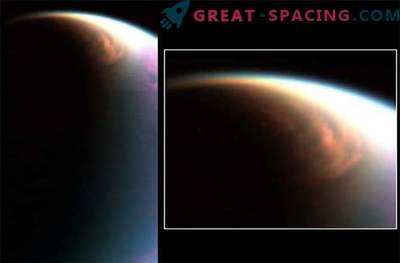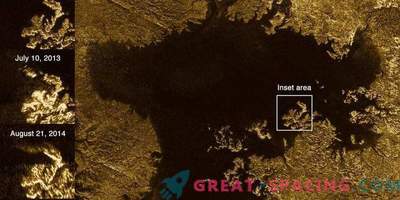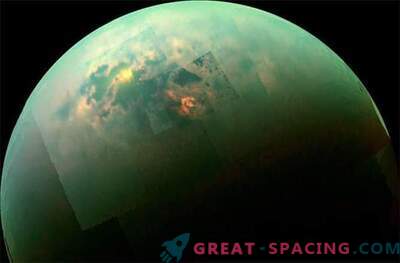
At the end of NASA’s Cassini mission, the unit visited Saturn’s giant Titan satellite and got an overview of the northern polar landscape with mysterious moon lakes and seas of liquid methane and ethane. The images were obtained on September 11, 2017, and after 4 days the spacecraft was intentionally directed into the atmosphere of the planet.
The Punga Sea (390 km) is located above the mosaic center, the Ligea Sea (500 km) is below the center, and the Kraken Sea (1200 km) is on the left. Numerous small lakes of Titan, scattered on the right, are observed around the seas. One of the main secrets of the satellite is the formation of lakes.
Another question was about the weather of Titan. With a dense atmosphere, the satellite has a methane cycle, resembling a water one on our planet (evaporation, cloud formation, precipitation, surface runoff into rivers and passage to lakes and seas). At the time of the southern summer of Titan, Cassini watched the activity of clouds above the south pole. The picture shows a typical view for the period of the northern spring and summer with a few small clouds. They seem bright and are just below the center of the mosaic. Scientists expected to observe more symmetry between the southern and northern summer. In fact, atmospheric models predicted summer clouds over northern latitudes several years ago. Therefore, the fact that they did not appear before the end of the mission hides a certain riddle about the methane cycle of Titan and the weather of the moon.
Images for the mosaic are obtained by the camera of the device using a spectral filter sensitive to the wavelength of near-infrared light with a center at 938 nanometers. Remoteness when shooting - 140,000 km, and the scale - 800 meters per pixel.











































